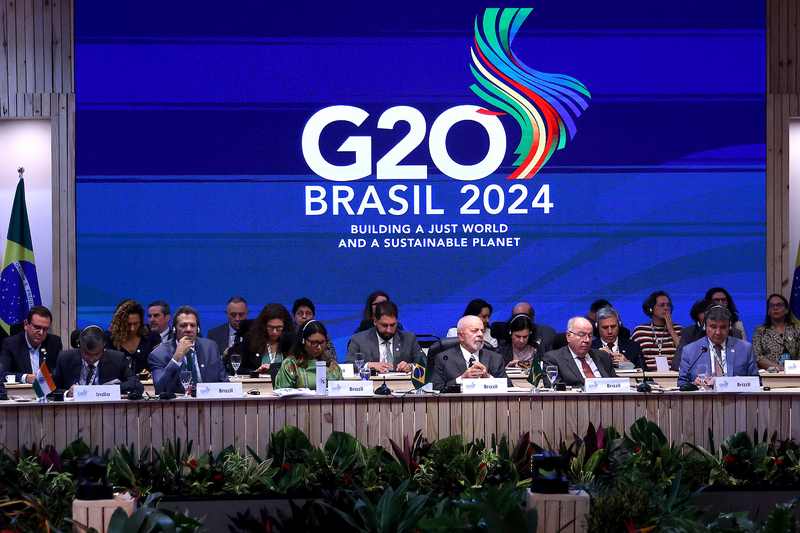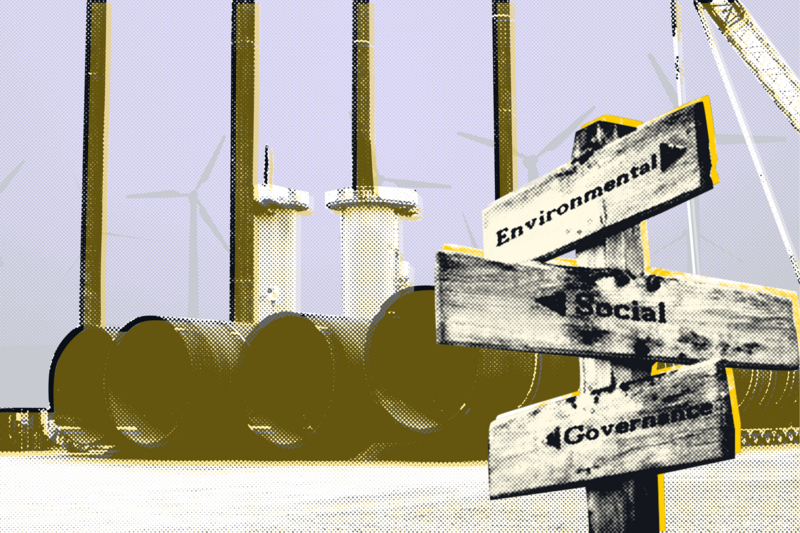In this batch of ESG-related news items, the focus is on funding attempts, sources and commitments, plus the decline in ESG-related bonds, such as “green” and “social” bonds.
And we find out why US Treasury Secretary Janet Yellin is arguing that environmentally-conscious financing is the “single-greatest economic opportunity of the 21st century.”
Azerbaijan plans to establish climate fund for COP29
Azerbaijan will be hosting the the UN’s 29th Conference of the Parties on Climate Change (COP 29) in November. The conference will be presided over by Mukhtar Babayev, Azerbaijan’s Ecology Minister and former executive at the country’s state-owned oil company SOCAR.
A notable feature of the conference package is the establishment of the Climate Finance Action Fund.
This fund will take contributions from countries and industries heavily involved in fossil fuel production, and invest them in renewable energy programs in developing countries. To avoid conflicts of interest, profits from the fund’s clean energy initiatives will be plowed back into it.
Azerbaijan hopes to raise at least $1 billion in contributions in the purely voluntary fund, which has no enforcement mechanism.
According to the UN, funding for climate initiatives is in a dire state. The $100 billion in annual funds currently promised by wealthy nations to poor nations suffering from climate strife is nowhere near the multi-trillion-dollar target established by economist Nicholas Stern.
There is extensive debate over how much money is needed, and whether governments should generate funds from taxpayers or industry levies.
Azerbaijan’s fundraising efforts will follow those of the UAE, which hosted last year’s COP28. At that conference, the UAE committed to establishing “ALTÉRRA,” a $30 billion climate investment fund. This signals an increase in oil-reliant countries’ desire to maintain public trust in their commitment to environmental responsibility, maintain influence on the form and scope of subsequent international agreements, and diversify their energy portfolios.
Criticism
Oil revenues underpin 60% of Azerbaijan’s state budget, with oil and gas comprising about half of its GDP. The country’s own environment has been adversely affected by wastewater runoff and oil spills, making it an apt example of the problems COP29 seeks to address.
Critics of the plan point to Azerbaijan’s rampant corruption problems and oil-dominant rentier economy where democratic norms are frequently eschewed. In 2017 it was accused of funneling money through shell companies to foreign politicians to increase its reputation – a scheme referred to as the “Azerbaijani laundromat.”
Since payment into the Climate Finance Action Fund is voluntary, some speculate that Azerbaijan’s management could create incentives that are contrary to the fund’s purpose of countering environmental deficits and grant fossil fuel industry participants outsized influence in how the funds are disbursed.
Critics also point to the program’s greenwashing potential. By simply redirecting capital, fossil fuel industry participants will have a channel to boost their reputations without being coerced into limiting environmentally destructive behavior.
Azerbaijan has been at war with neighboring Armenia for years, leading some politicians including Paris Mayor Anne Hidalgo to boycott COP29.
Yellen stresses need for increased environmental funding
Speaking in Belem, Brazil, US Treasury Secretary Janet Yellen stated that a transition to a low-carbon economy would require upwards of $3 trillion in investments per year until 2050. This number is reminiscent of figures previously provided by the UN.
“Neglecting to address climate change and the loss of nature and biodiversity is not just bad environmental policy. It is bad economic policy,” Yellen said. She also said that environmentally-conscious financing was the “single-greatest economic opportunity of the 21st century.”
Wealthy economies mobilized a record $116 billion for climate finance for developing countries in 2022, 40% of which came from multilateral development banks (MDBs) such as the World Bank and Inter-American Development Bank.
Yellen also urged MDBs to focus on environmentally sustainable development and highlighted the necessity of a massive increase in private sector investment.
Moody’s notes a decline in ESG bonds for Q2
According to a report from Moody’s, global issuance of ESG bonds declined in the second quarter of 2024. Total issuance for Q2 reached $238 billion, down 19% from Q1 2024’s strong showings.
This figure comprises:
- $146 billion in green bonds, down 12% from Q1;
- $41 billion in sustainability bonds, down 29% from Q1;
- $39 billion in social bonds, down 10% from Q1;
- $8 billion in sustainability-linked bonds (SLBs), down 18% from Q1 and at its lowest level since 2020. Moody’s credited this decline to issuers being discouraged by investor skepticism of the ability to hit linked sustainability targets;
- $3 billion in transition bonds, down 72% from Q1. Transition bonds’ issuance is currently led by the Japanese government and are typically linked to de-carbonization efforts.
Combined with Q1’s strong showings, this puts total ESG bond volume at $534 billion for the half-year.
Q2’s total is down 20% from the same period last year. As a share of the total bond market, ESG bonds now comprise 11%, the lowest percentage since 2020. Moody’s said that overall, increased regulatory scrutiny cooled the number of issuers entering the market. Anxiety in Europe and North America over rising inflation and interest rates also led to a relative decline in their share of ESG bond issuance compared to Asia.
Despite the slowdown, Moody’s still has confidence in the ESG bond market’s continued strength, predicting a total issuance of $950 billion or higher by the end of the year, with a chance of hitting $1 trillion.

















